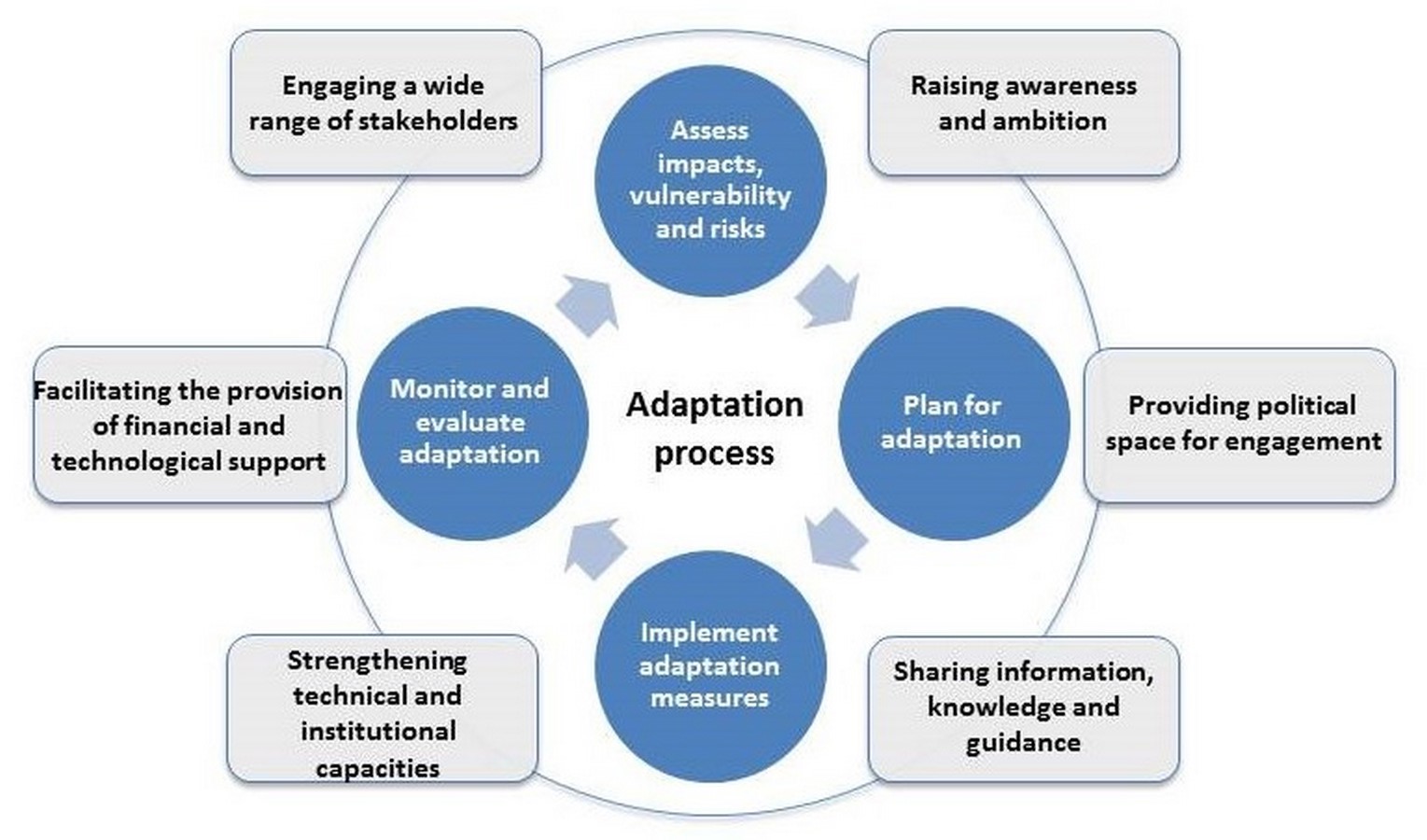Urban Resilience
Resilient cities are cities that have the ability to absorb, recover, and prepare for future shocks (economic, environmental, social & and institutional). Resilient planning promotes sustainable development, well-being, and inclusive growth. It is the capacity of individuals, communities, institutions, businesses, and systems within a city to survive, adapt, and grow no matter what chronic stresses and acute shocks they experience.
Urban resilience is a global concern, due to the concomitance of climate change and the urbanization process. This is particularly true in the UAE, a rapidly growing country in a coastal desert environment. Green infrastructure is considered a prominent tool for urban resilience and is promoted by the recent Green Abu Dhabi Infrastructure policy. GADI has various objectives such as reducing the impact of sand storms on the city, turning the city more attractive and walkable, and in this way improving the citizens’ health and wellbeing, by planting green trees and lawns and preserving wild biodiversity in protected areas. In turn, GADI contributes to the reconnection of urban dwellers with nature. To assess the efficiency of GADI policy in facing these multiple challenges, they implemented a multidisciplinary method, crossing a social and ecological assessment of green and blue infrastructure at nested scales. They first assess the green infrastructure, using land-use data (OSM map) and NDVI (Sentinel images) and modeling the connection between vegetation patches with GIS. Surprisingly, this infrastructure is vital, but a botanical survey shows that most of the vegetated areas have a small number of species, mainly exotic, climate-sensitive, and water-intensive. Irrigation water proceeds from desalinization plants, maintaining the ecological balance of this green infrastructure. Then, a social survey shows that the reconnection between urban dwellers and nature is favored in natural and semi-natural green spaces, while the connection with family members, neighbors, and friends is favored in more conventional spaces, less sensitive to trampling, with low biodiversity and simple landscapes. Informal practices of reconnection with the living beings, by organic gardening, plantation, and nourishing birds within the dense city, reveal a search for a new relationship with urban nature in the proximity of the housing. Third, we put to test the efficiency of the ecological frame with a waterbird, an indicator of the quality of coastal environments, Egretta gularis, very popular with amateurs (Gbif database). They identified its core habitats (Mangroves, wetlands), those favorable (waterways, vegetation), and those unfavorable to movements (built zones, roads, desert) and modeled the ecological network using Graphab software. Egretta gularis habitats are well-connected outside the city and have only one efficient path through the city center. Due to the proactive policy, the green and blue infrastructure is more consistent than expected in a desert coastal city and has ecological and social benefits.

Climate Adaptions
Climate change adaptation means actions that reduce the negative impact of climate change while taking advantage of potential new opportunities. Climate change involves adjusting policies and actions because of observed or expected changes in climate. Adaptation can be reactive, occurring in response to climate impacts, or anticipatory, occurring before the effects of climate change are observed. In most circumstances, anticipatory adaptations will result in low long-term costs and be more effective than reactive adaptations.
As the UAE adapts to its harsh desert environment, climate change poses significant threats to its economic growth, environmental sustainability, and social well-being. The UAE and the Gulf regions are expected to experience some drastic changes like increasing temperature and humidity levels, more intense rainfall, rising sea levels, and increased frequency and intensity of extreme events. In collaboration with GGGI, the UAE Ministry of Climate Change and Environment (MOCCAE) developed the National Climate Change Plan for 2050 in 2017, an enabling policy framework that allowed the transition toward a climate-resilient green economy, simultaneously managing greenhouse gas (GHG) emissions, minimizing climate risks, and supporting economic diversification efforts.
To implement the Plan, the National Climate Change Adaptation Program was launched with the priority of making the UAE one of the most climate-resilient countries in the world. The program focuses on risk assessment and adaptation analysis in four key sectors: energy, health, infrastructure, and environment, which are considered critical areas in ensuring climate resilience in the UAE. With the identification and analysis of climate risks, a range of adaptation measures will be examined and prioritized. The adaptation action plans include information on the determined actions and the corresponding actors, timeline, M&E metrics as well as the indicative costs and impacts. This will make way for the mainstreaming of climate change adaptation and resilience in sectoral development strategies in the long term. The project objectives are thus to:
i.) Identify climate trends, assess impacts, and prioritize climate risks that demand urgent action, and
ii.) Involve all stakeholder groups in developing sectoral adaptation action plans and their implementation.
The impact is enhanced long-term national resilience to the impacts of climate change. The outcome is climate change adaptation mainstreamed in key sectors in the UAE.

References:
- HMC Architects (2019) How does Architecture impact society? [online] Available at –
- Resilient Cities Network – What isUrban Resilience? [online] Available at – https://resilientcitiesnetwork.org/what-is-urban-resilience/
- OECD.org – Resilient cities [online] Available at – https://www.oecd.org/cfe/resilient-cities.htm
- United Nations Climate Chane – Adaptation and resilience [online] Available at – https://unfccc.int/topics/adaptation-and-resilience/the-big-picture/introduction
- GGGI – AE03 National Climate Adaptation Program [online] Available at – https://gggi.org/project/project-reference-profiles-uaeae03-uae-national-climate-adaptation-program/#:~:text=In%20collaboration%20with%20GGGI%2C%20the,)%20emissions%2C%20minimizing%20climate%20risks%2C
- HAL – Greening the desert to promote urban resilience? A study case in Abu Dhabu, UAE [online] Available at –https://hal.science/hal-02398997
Image Sources
- Image 1: OECD.org – Resilient cities [online] Available at – https://www.oecd.org/media/oecdorg/directorates/directorateforpublicgovernance/measuring-resilience.jpg
- Image 2: United Nations Climate Chane – Adaptation and resilience [online] Available at – https://unfccc.int/sites/default/files/2017-10/Adaptation%20cycle%20reduced.jpg













